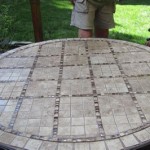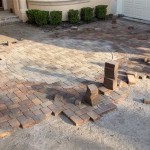Laying a Concrete Patio DIY: A Step-by-Step Guide
Transforming your backyard into an idyllic outdoor sanctuary can be a rewarding endeavor. Creating a concrete patio is an excellent way to add functional beauty to your space. While the task may seem daunting, it's certainly achievable with proper planning and execution. This comprehensive guide will walk you through the essential steps of laying a concrete patio DIY.
1. Planning and Preparation
Meticulous planning is crucial for a successful outcome. Determine the desired size, shape, and location of your patio. Consider its proximity to your home, drainage needs, and potential obstacles. Mark out the area accurately using stakes and string.
Remove any grass or vegetation within the marked area. Dig out the soil to a depth of approximately 6 inches, ensuring a level base. Compact the soil using a hand tamper or rental compactor. This will provide a solid foundation for your concrete.
2. Installing Forms
Forms define the perimeter of your patio and prevent the concrete from spreading outside the designated area. Use wooden planks or aluminum forms and secure them firmly in place using stakes. Ensure corners are square and edges are straight by using a level.
3. Installing Rebar
Rebar, or reinforcing steel, strengthens the concrete and prevents cracking. Place rebar bars perpendicularly at 12-18 inch intervals. Secure them using wire ties or spacers to maintain their position.
4. Mixing and Pouring Concrete
Mixing concrete requires precision. Follow the manufacturer's instructions carefully. You will need a cement mixer or a large mixing tub and a shovel. Pour the concrete into your forms, working it into place using a rake or screed. Finish the surface with a bull float to smooth it.
5. Curing and Finishing
Keep the concrete moist for the next few days to allow it to cure properly. Cover it with plastic or burlap and water it regularly. After a week, remove the forms and brush the surface to expose the aggregate. Apply a concrete sealer to protect the patio from stains and weather damage.
Tips for Success
Ensure the surface is properly compacted and level before pouring concrete.
Work in smaller sections to avoid air bubbles in the concrete.
Avoid adding too much water to the concrete mixture.
Allow ample time for curing to prevent cracking.
Consider using a concrete stamp or stain to enhance the aesthetic appeal of your patio.

Pouring Concrete Patio What Could Go Wrong With Doing It Yourself

Diy Concrete Patio In 8 Easy Steps How To Pour A Cement Slab

How To Pour A Concrete Backyard Patio Slab Beginner Guide

Quikrete Building A Concrete Patio

How To Extend A Patio Ask This Old House

How To Prep Form Pour A Concrete Slab For Beginners Start Finish

12 Diy Concrete Slab Mistakes To Avoid When Pouring Network

How To Pour Concrete For A Diy Patio Next Modular

Diy Concrete Patio In 8 Easy Steps How To Pour A Cement Slab

How To Build And Lay A Patio Marshalls








